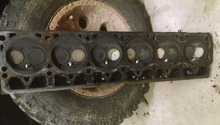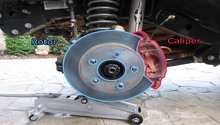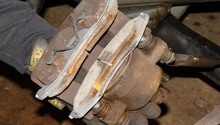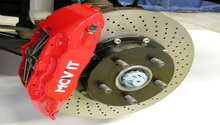Jeep Grand Cherokee 1999-2004: How to Replace Broken Piston
Has a broken piston rendered your Jeep Grand Cherokee to the driveway? For those who love to DIY, this article will walk you through the process of replacing a broken piston and get your Jeep back on the road.
This article applies to the Jeep Grand Cherokee WJ (1999-2004).
Pistons are a pretty simple part, which are made out of cast or forged metal. But they form an important part of the core of your engine, and a busted piston means that you aren't going anywhere. Pistons are connected to rods, which in turn are connected to your crankshaft. During the intake stroke, the crankshaft pulls the piston downward. When this happens, the inlet valve opens up to allow fuel and air to mix. The compression stroke follows, when the inlet valve closes and the piston moves back up in the cylinder, it compresses the mixture of fuel and air. The power stroke that follows sees that mixture ignited by the spark plugs, which pushes the piston back down. Pistons have piston rings to help them form a tight seal in the cylinder, which is key to proper performance and preventing any sort of leaks.
Pistons are generally a pretty reliable part, but Jeep Grand Cherokees have a well known history of producing broken ones. Symptoms of a broken piston include engine noise like a rattling or knocking at idle, oil burning, misfires, and a loss of power. Too much heat in the combustion chamber or a lack of proper lubrication can cause the piston to crack, partially melt, or get scuffed or scored. If your timing belt breaks, a piston can hit the valve with so much force that it simply shatters. If you have one of these issues and need to replace a piston, keep reading and we'll walk you through the process.

Materials Needed
- Ratchet
- Assorted common size sockets
- Oil drain pan
- Rags
- Piston
- Piston ring
- Bearings (optional)
- Floor jack and jack stands or ramps
Replacing a piston can be a daunting task that is generally best left for a professional to complete. At the very least, you will want to take your piston and rod to an automotive machine shop for proper fitment.
Step 1 – Remove cylinder head and oil pan
To get to the piston that is damaged, you will need to first remove the cylinder head and oil pan. Lift up the front of the Jeep with a floor jack and place it on jack stands, or use ramps if needed, to access the oil pan. Place a drain pan underneath the drain plug, then remove the drain plug and allow all the oil to drain. To remove the oil pan, first remove the four bolts holding the crossmember in place. Next, remove the bolts holding the oil pan in place and remove the oil pan. Go back under the hood to remove the valve cover bolts and valve cover. Remove the cylinder head bolts and the cylinder head.
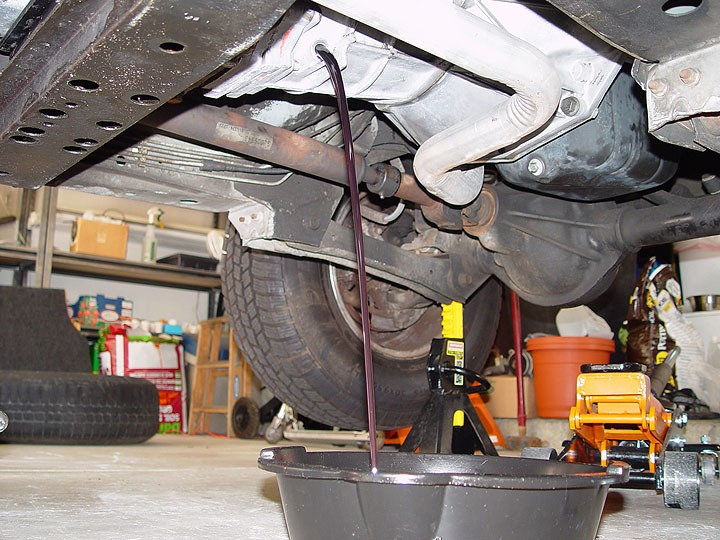
Figure 1. Drain the oil from your engine. 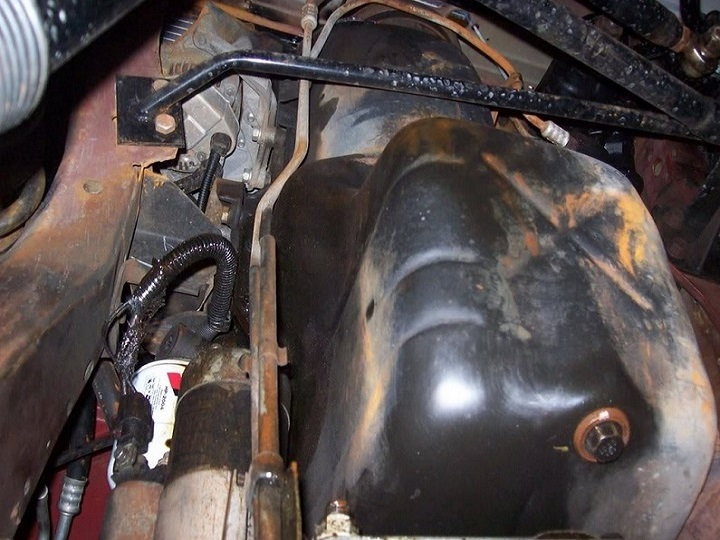
Figure 2. Remove the crossmember and oil pan. 
Figure 3. Remove the valve cover and cylinder head.
Step 2 – Remove the damaged piston
Remove the rod bearing from the piston that needs to be removed. Pull the piston out of the engine from the top. Inspect the cylinder wall for damage or any pieces that might have been left behind. If you spot any damage, you might have to take the block to a machine shop for repair. Take the connecting rod and the new piston to a machine shop for proper fitment.
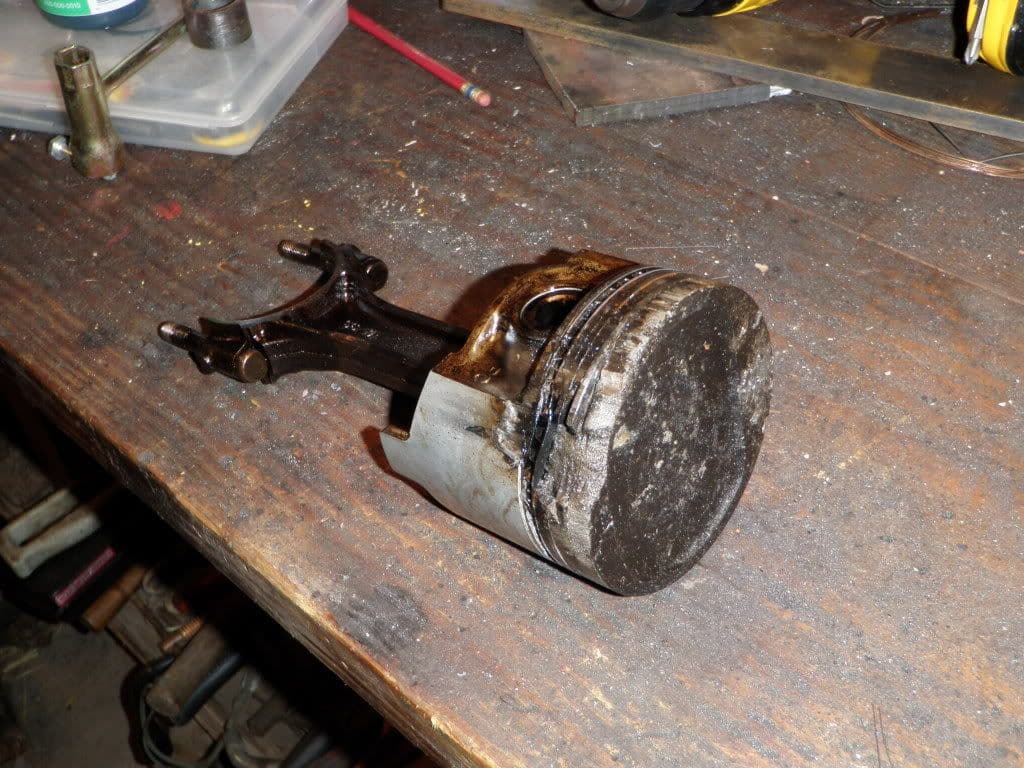
Step 3 – Install new piston
Install the new rings and a new bearing on your piston (if the old bearing was damaged). Slide the new piston and connecting rod into the cylinder, being extremely careful not to nick your crankshaft with the rod bolts, as this could damage your crankshaft. Reinstall the rod bearing. Reinstall the cylinder head and valve cover. Reinstall the oil pan and crossmember. Fill the engine with oil, making sure the drain plug is reinstalled. Start the engine and check for leaks. Listen to ensure any noises are gone before taking for a test drive.
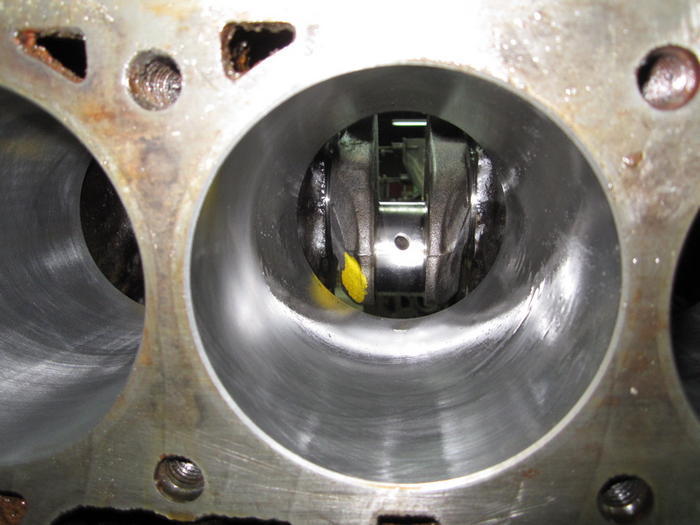
Related Discussions
- Replacing a Broken Piston - CherokeeForum.com
- Broken Piston Skirt - CherokeeForum.com
- Piston Skirt Broken Off, Now What? - CherokeeForum.com

